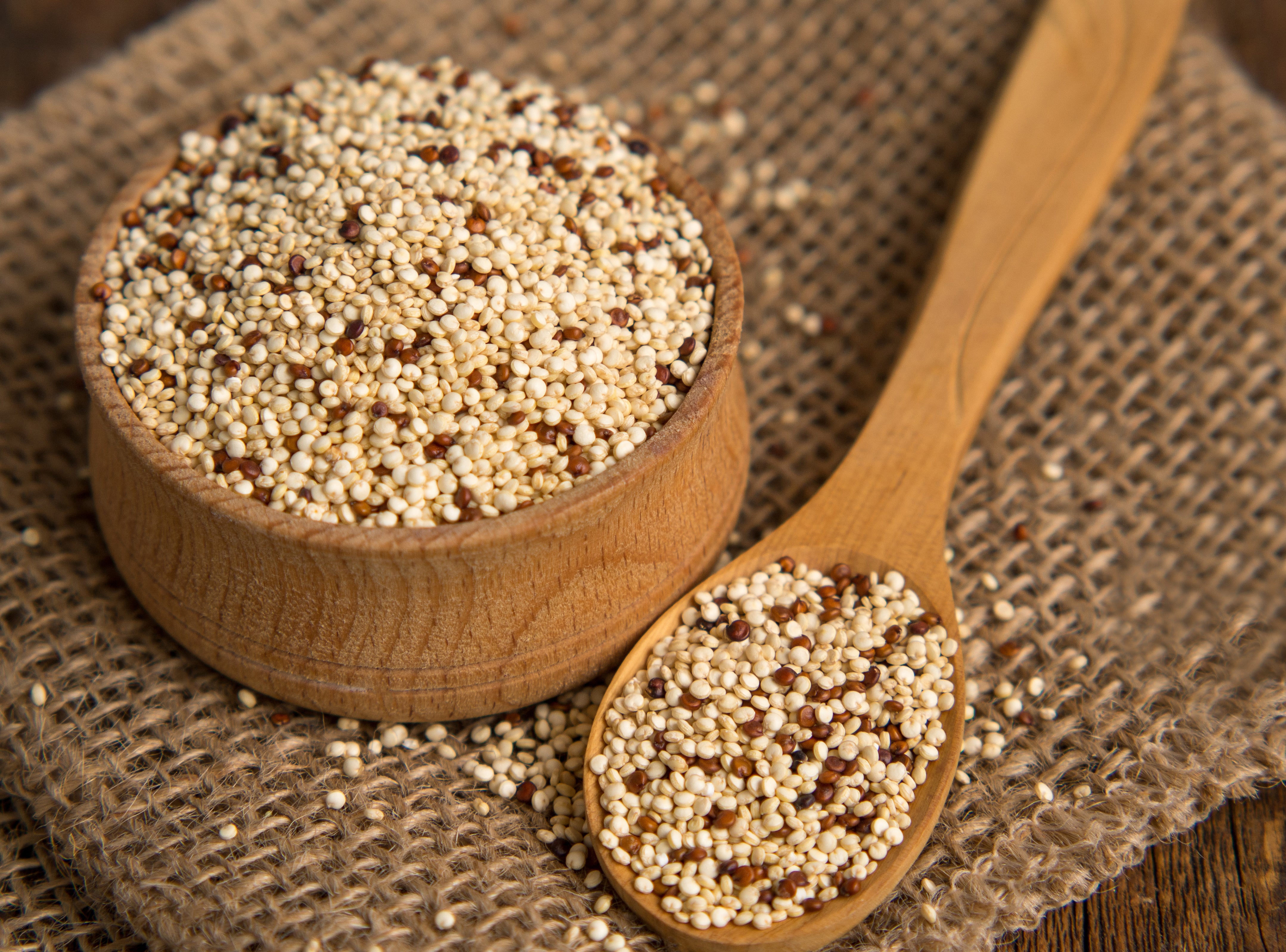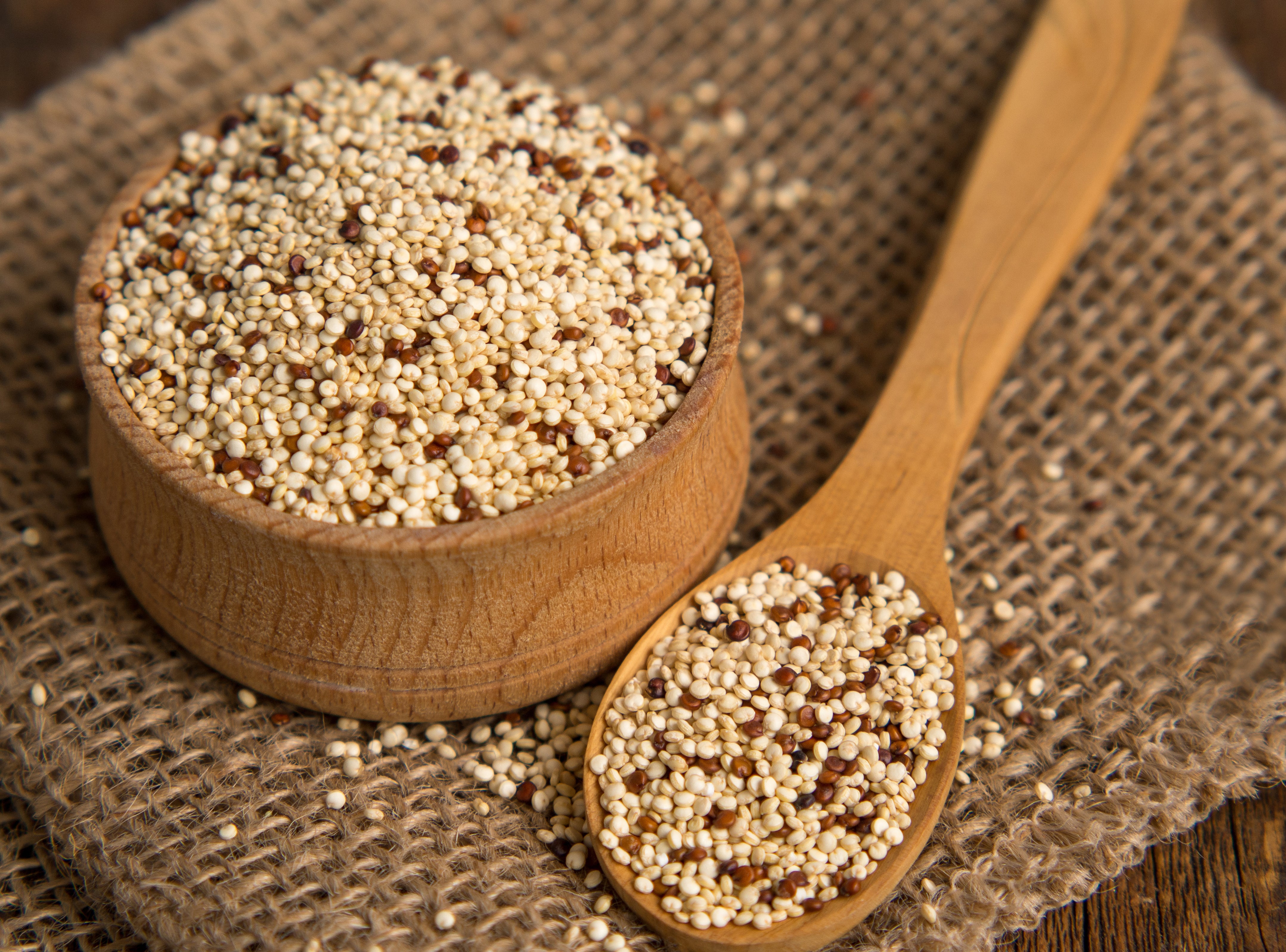The quinoa
The quinoa

In today’s superfoods article, we’re looking at a very special food, the so-called “supergrain of the Incas” – quinoa.
The term "supergrain" is misleading, however, because quinoa is not a true grain, but rather a so-called "pseudo-cereal." The term "pseudo-cereal" is used to describe plants that have similar properties to conventional grains, but from a botanical point of view, do not belong to the grasses that make up the typical grain family.
Pseudocereals, such as quinoa, buckwheat, and amaranth, also produce edible seeds that are rich in starch and can therefore be used in a similar way to traditional grains. The key difference, however, lies in their membership in different plant families. Quinoa, for example, belongs to the Amaranthaceae family, which makes it different from conventional grains in its biological composition and nutrient profiles. These unique properties make pseudocereals a valuable addition to a balanced diet, especially for people seeking gluten-free or nutrient-dense alternatives to traditional grains.
A nutritional miracle
Quinoa is interesting not only for its botanical classification, but also for its exceptional nutritional content. It is often called a nutritional miracle because it is a rich source of protein, fiber, vitamins, and minerals. Compared to many conventional grains, quinoa contains all nine essential amino acids, making it a complete protein. This property is especially important for vegetarians and vegans, as it can often be difficult to find plant-based foods that offer such a comprehensive amino acid profile.
Quinoa is also rich in magnesium, iron, B vitamins, and omega-3 fatty acids. These nutrients are important for many different bodily functions, including energy production, blood formation, and immune system support. The fiber it contains also promotes healthy digestion and can help regulate blood sugar levels.
Another advantage of quinoa is its versatility in the kitchen. It can be served as a side dish similar to rice or couscous, used in salads, or even ground into flour to make gluten-free bread and pastries. Its slightly nutty flavor adds a special depth of flavor to many dishes.
Recipe: Quinoa Salad

- Cooking quinoa: Rinse the quinoa in a fine sieve under running water to remove any bitterness. Place the rinsed quinoa in a saucepan along with the 2 cups of water. Bring the water to a boil, then reduce the heat and simmer, covered, for about 15 minutes, until the quinoa is tender and the water has been completely absorbed. Remove the pan from the heat and let the quinoa cool.
- Prepare salad ingredients: While the quinoa is cooking and cooling, peel, pit, and dice the avocado. Finely dice the red bell pepper and spring onions, and roughly chop the parsley.
- Prepare the dressing: In a small bowl, mix olive oil with lemon juice and season with salt and pepper.
- Assemble the salad: In a large bowl, combine the cooled quinoa with the chickpeas, diced avocado, red bell pepper, spring onions, and parsley. Drizzle the prepared dressing over the salad and toss well. Season to taste and adjust seasoning if desired.
- Serve: Arrange the salad on plates and serve immediately, or chill in the refrigerator until ready to serve.
Recipe: Quinoa stir-fry

- Cooking quinoa: Rinse the quinoa thoroughly under running water to remove any bitterness. Place the quinoa in a pot with the water or vegetable broth, bring to a boil, then reduce the heat and simmer, covered, for about 15 minutes, until the quinoa is tender and the liquid has been completely absorbed. Remove the pot from the heat and let the quinoa cool.
- Brown the chicken: Heat 1 tablespoon of oil in a large skillet or wok over medium heat. Add the chicken cubes to the pan and fry, stirring occasionally, until golden brown and cooked through. Remove the chicken from the pan and set aside.
- Sauté vegetables: Add the remaining tablespoon of oil to the pan. Add the carrots, zucchini, and red bell pepper and sauté, stirring occasionally, for about 5 minutes, until the vegetables are softened but still firm to the bite.
- Add flavors: Add the chopped garlic and ginger to the vegetables in the pan and fry for another 1-2 minutes until aromatic.
- Merge: Add the roasted chicken and cooked quinoa to the vegetables in the pan. Pour in the soy sauce and season with salt and pepper to taste. Mix all ingredients well and cook for a few minutes, stirring, until everything is hot and well blended.
- Serve: Arrange the quinoa stir-fry on plates and garnish with fresh herbs such as cilantro or sliced spring onions, if desired.
Sustainability and cultural significance
Quinoa is known not only for its nutritional benefits but also for its sustainability. It's a hardy plant that grows in diverse climates, requires little water, and can therefore be cultivated in regions where other crops don't thrive. These properties make quinoa an important resource in combating food insecurity and promoting sustainable agricultural practices.
Quinoa's cultural significance dates back thousands of years. It was a staple food of the Incas and is still used today in many traditional dishes in South America. This cultural background also gave rise to the name "supergrain of the Incas."
Conclusion
Quinoa is a true nutritional powerhouse with a long history and a promising future. Its unique properties, culinary versatility, and sustainable cultivation options make it a valuable component of a healthy and conscious diet and a true superfood.




